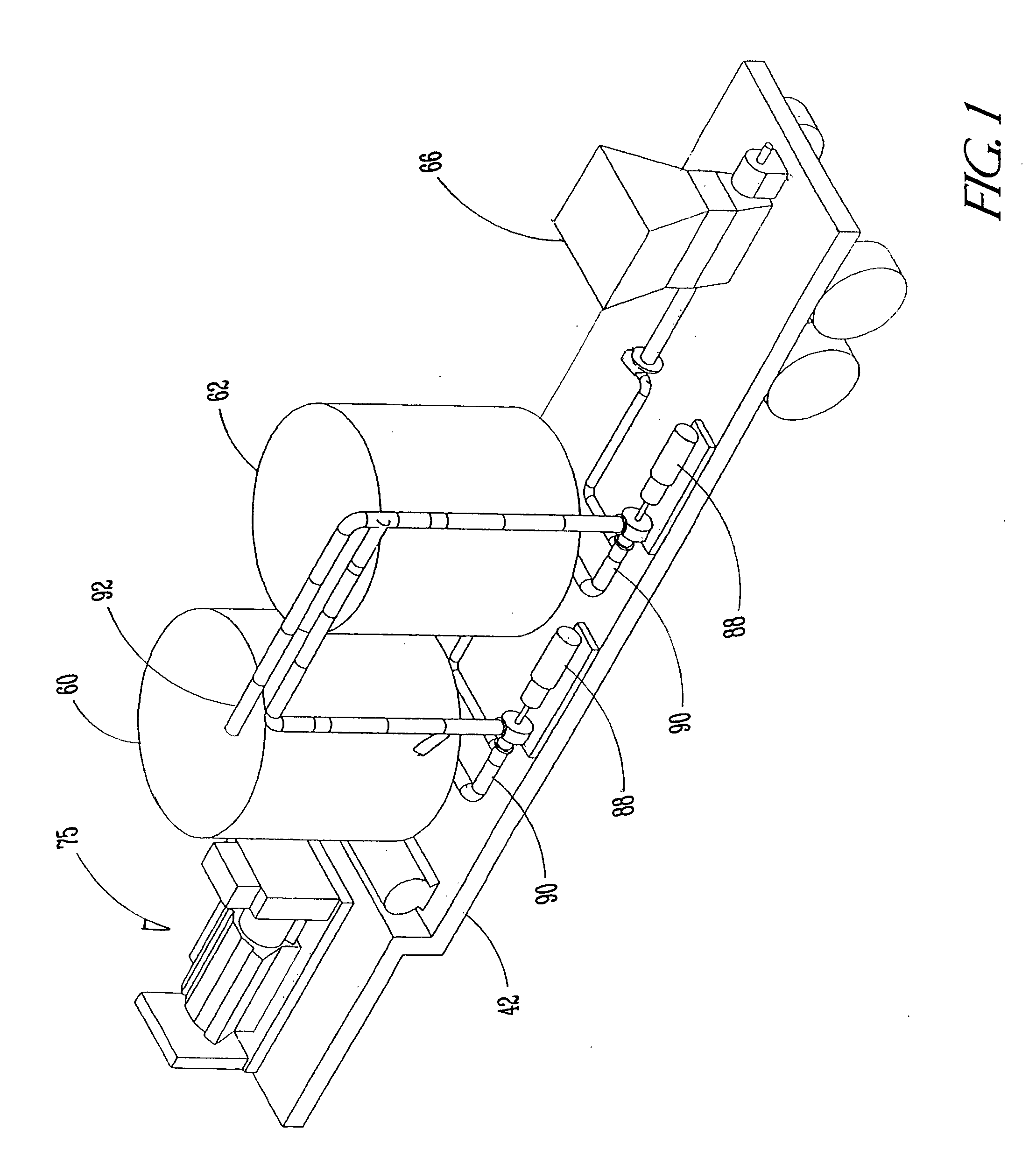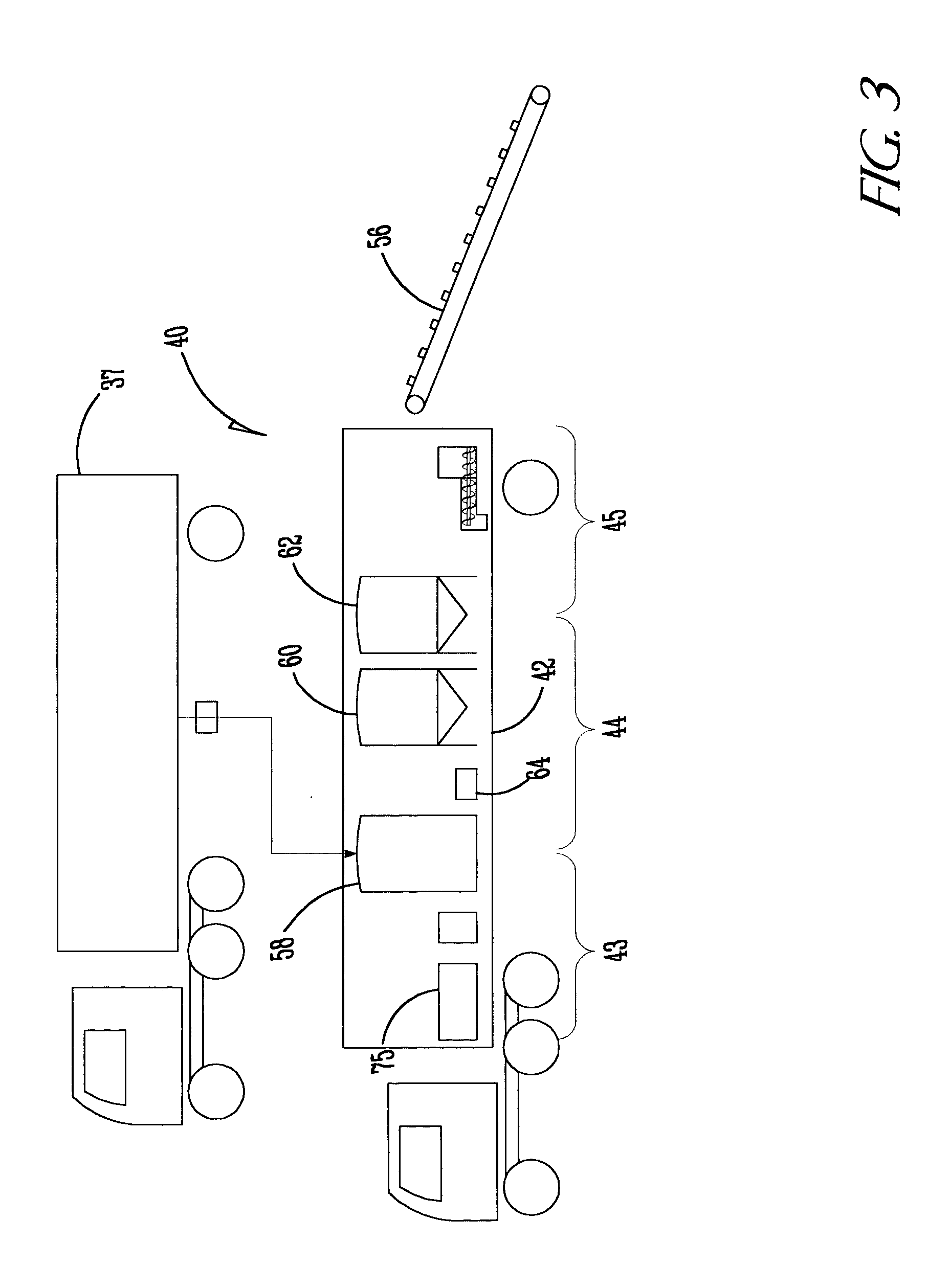Process for natural recycling of protein waste
a technology of protein waste and processing method, which is applied in the direction of meat/fish preservation using acids, animal corpse fertilisers, etc., can solve the problems of destroying the quality or usefulness of processed protein waste, affecting the quality of protein waste, and posing disposal problems for carcasses from animal production facilities,
- Summary
- Abstract
- Description
- Claims
- Application Information
AI Technical Summary
Benefits of technology
Problems solved by technology
Method used
Image
Examples
Embodiment Construction
)
[0035] The apparatus and process for naturally recycling protein waste of the present invention comprises an enzymatic digest mixing assembly shown generally as 15 in FIG. 2, a mobile grinding assembly shown generally as 40 in FIGS. 3 and 4, a digesting and emulsifying assembly shown generally as 100 in FIG. 5, and a drying system shown generally as 120 in FIGS. 6 and 7.
[0036] In general, the process is shown in the flow chart depicted in FIG. 9 and requires that an enzymatic digest medium 18 of a particular pH level be prepared and stored until such time as it is needed. The medium of the preferred embodiment comprises enzymes 204, inedible egg 206, a preservative 208 and water. The enzymes 204 may include protease to break down and digest most proteins, and keritinase to aid in digestion of feathers and the preferred embodiment contemplates a mixture of preservative 2 lbs / ton, enzyme 11 / 2 lbs / ton, and the remainder per ton of inedible egg. The preservative 208 restricts multiplic...
PUM
| Property | Measurement | Unit |
|---|---|---|
| Temperature | aaaaa | aaaaa |
| Angle | aaaaa | aaaaa |
| Acidity | aaaaa | aaaaa |
Abstract
Description
Claims
Application Information
 Login to View More
Login to View More - R&D
- Intellectual Property
- Life Sciences
- Materials
- Tech Scout
- Unparalleled Data Quality
- Higher Quality Content
- 60% Fewer Hallucinations
Browse by: Latest US Patents, China's latest patents, Technical Efficacy Thesaurus, Application Domain, Technology Topic, Popular Technical Reports.
© 2025 PatSnap. All rights reserved.Legal|Privacy policy|Modern Slavery Act Transparency Statement|Sitemap|About US| Contact US: help@patsnap.com



